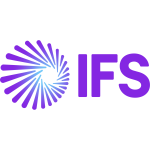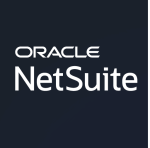The POD applications are very useful to us. There are a few POD apps which we are using for the different business scenarios. They are quite interesting.
The initial setup is pretty straightforward. The documentation is very good.
The solution can scale well.
The solution is stable.
It's been just one year that we started using this product, due to the fact that we need to have different integrations as well to other systems. With S/4HANA, when SAP started, everything worked in a single SAP system. Slowly then it's been delegated or divided into multiple SAP systems. That's why we have around 25 different SAP products running in our landscape. Yet, at the same time, S/4HANA is the core. It's the core component.
Going forward, I believe more systems could be consolidated into S/4HANA. We need to reduce the number of SAP systems running in our landscape. S/4HANA has the capacity to host many other SAP products, therefore we can discontinue some of the SAP products. Currently, we have now the Global Services, the Governance, Risk, and Compliance, and Enterprise Portal, BW, Supply Chain Management, Warehouse Management, et cetera. If SAP could consolidate many of the systems so that we can reduce the number of systems, that would be ideal.
The solution can be a bit expensive.
We would like to see more DevOps capabilities in the future.
The solution would benefit from offering more serverless features in the sense that when you deploy SAP, it's a pretty big deployment and you have a lot of dependencies or you are closely tied up or you have a dependency with the hardware vendor and the hardware providers and the certified hardware and items like that. At the same time, all these deployed components and these files are possible to deploy without a server as well. Slowly SAP is providing some of the features so that you can deploy this in containers and so you don't have any dependency on the running hardware. That way, you can restart the systems without any downtime or the end-users will not feel the difference. Aspects like that need to be improved.
We do have here monthly maintenance due to the fact that sometimes we need to recharge the system and we have seen from the end-users there will be certain downtime as well. If there is no dependency with the hardware and if it goes serverless, then we can have zero-downtime maintenance.
We've been using the solution for the past year or so. It hasn't been that long.
The solution is very stable. There are no bugs or glitches. It doesn't crash or freeze. It's very reliable.
The solution is scalable. At the same time, it depends on where you deploy your systems. If you deploy your systems in Azure, then it would be using the scalability of Azure. If you deploy in AWS, it uses the scalability of AWS. If you deploy in a virtual private environment, then it depends on where you deployed the system. At the same time, it depends on being compatible with all these different hyper-scalers. For the most part, it goes pretty well with the different platforms.
We are deploying the solution in different countries. Currently, we have close to 10,000 users working in SAP. Yearly, we do the deployment in multiple countries. In two months, we deploy in one more country. There will be another 200, 300 more users will be coming. By the end of this year, there will be 2,000 more users. Currently, around 10,000 users are using this application.
The SAP S/4HANA technical support is mainly with the service provider. When you deploy SAP, you have different support teams. Most of the time, you will have a service provider or a supplier that you would be associating with. You will have a kind of application management or infrastructure management support with that vendor. For example, IBM, Capgemini, Accenture, DXC. They are the different vendors. However, then you get the OEM support via the SAP Support Portal for product-related issues. That support has got different priority levels based on the importance. Generally, we know how the SAP support works and it's acceptable. We're satisfied with the level of support provided overall.
The initial setup isn't too difficult. It's pretty straightforward for the most part. SAP has got some good documentation and there are different migration scenarios and implementation scenarios you can work with. With the help of documentation, things are pretty straightforward.
Most of the time, you do the SAP deployment or the migration with a partner. SAP has got certified partners to help with the implementation.
SAP has got different license mechanisms. It depends on how many SAP products you run and then how do you negotiate with the SAP teams and what kind of offer you get. At the same time, generally, everyone says SAP products are a bit costly.
Some of the SAP systems are licensed based on the number of CPUs that are being deployed, and some of the SAP products are licensed based on the number of primary users, and some of the SAP systems are based on the database footprint. Different SAP products have different license mechanisms, so there should be a person who is knowledgeable about SAP that can understand and then review the licensing agreement and get the right SAP product - and perhaps help negotiate the price.
We are customers and end-users.
We have around 25 different SAP products. We are using SAP S/4HANA in our company.
The production and the test systems are deployed in the virtual private cloud on-premise, and we have sandbox development and quality systems are deployed in the Azure public cloud.
I'd rate the solution at an eight out of ten.















